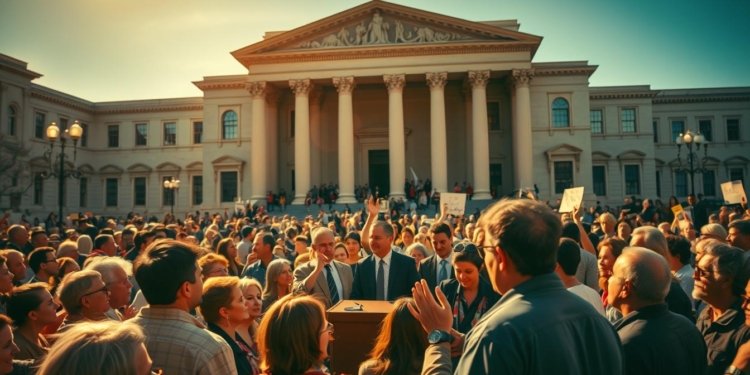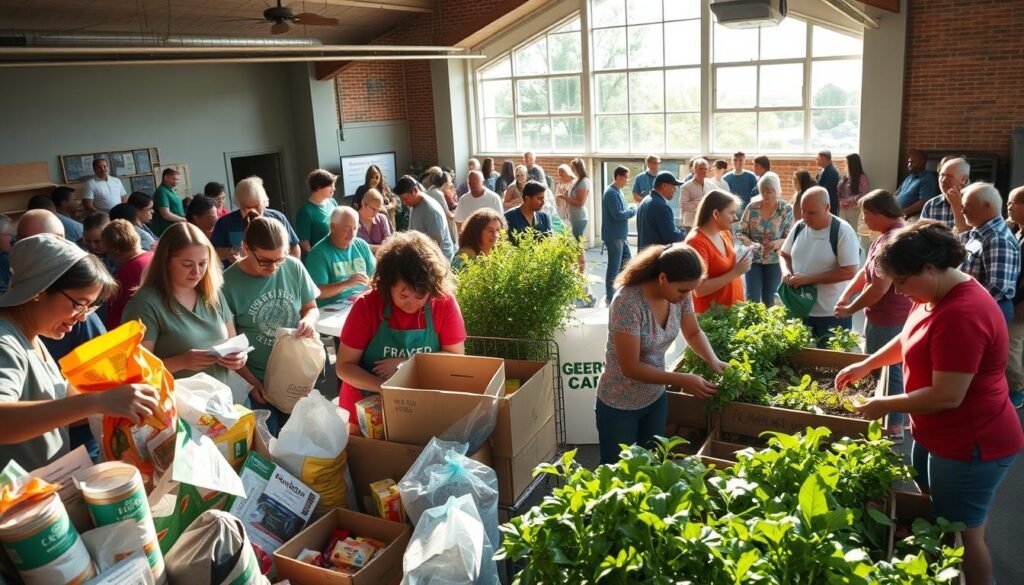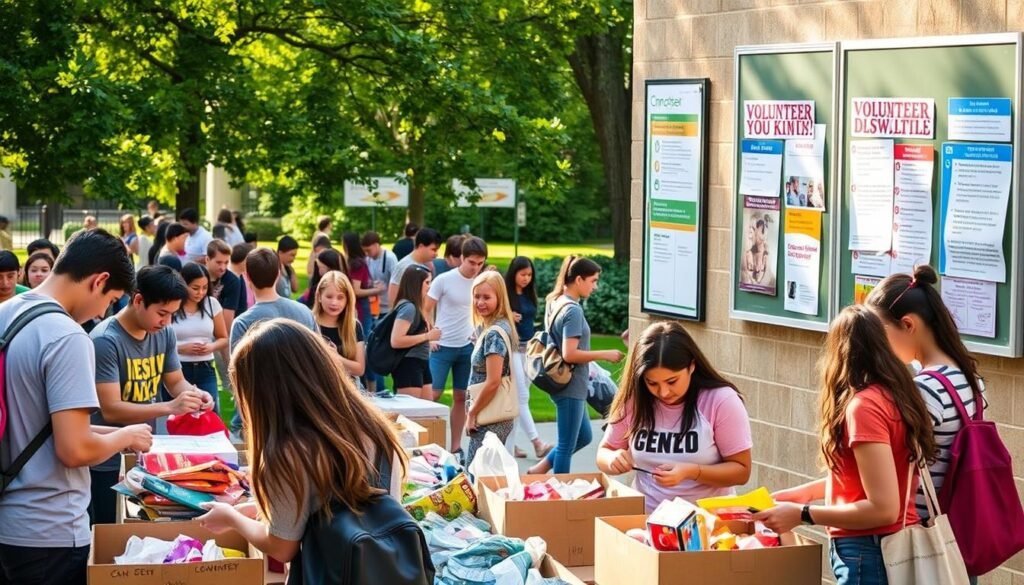What if the strength of a democracy depended not just on leaders, but on every citizen’s actions? A thriving society relies on people stepping up, sharing ideas, and shaping decisions together. When individuals engage, policies reflect real needs, and communities grow stronger.
Illinois State defines this as co-creating knowledge and positive change. From town halls to digital platforms, active involvement leads to better public services and fairer laws. Challenges like inequality and climate change demand more voices at the table.
This article explores five practical ways to make a difference—whether you’re a student, professional, or leader. See how tools like Greensboro’s eScribe Meeting Manager boost transparency. Democracy works best when everyone plays a part.
Key Takeaways
- Active citizenship strengthens democratic systems.
- Engagement leads to responsive policies and better services.
- Modern issues require collective action and fresh solutions.
- Technology, like eScribe, enhances government transparency.
- Every individual’s effort contributes to societal progress.
What Is Civic Participation? The Foundation of Democracy
The heartbeat of democracy isn’t just elections—it’s the ongoing dialogue between residents and leaders. Illinois State University defines this collaboration as working with partners to tackle shared goals, from safer streets to better schools. It’s where ideas meet action.
Defining Engagement and Its Real-World Impact
Formal processes like voting shape laws, but grassroots efforts—like neighborhood cleanups—show how small acts build trust. The Carnegie Foundation’s model emphasizes structured reflection, turning theory into change. For example, PHI 104 students earned credit by analyzing local Town Council debates.
Technology bridges gaps too. Tools like eScribe’s cloud platforms let residents weigh in on policies remotely. Over 60% of organizations now use such digital solutions, making government more accessible.
Connecting Communities and Decision-Makers
Partnerships thrive when both sides benefit. ACC 261 business students helped local shops streamline operations, while Fix It Fridays taught sewing skills and cut landfill waste. These activities prove engagement isn’t one-size-fits-all.
Data shows areas with robust programs see 40% higher voter turnout. Whether attending a meeting or joining a fundraiser, every step on the community engagement spectrum—from individual to systemic—strengthens democracy.
5 Powerful Examples of Civic Participation in Action
From voter drives to creative fundraisers, these initiatives prove democracy thrives on hands-on involvement. Across the U.S., students and residents are tackling local challenges with innovative projects—blending tradition with technology for measurable impact.
1. Voting and Political Engagement: Shaping Policies
SPA 214 Spanish students turned language practice into action by running bilingual voter registration drives. Their efforts helped non-English speakers access ballots—a fusion of political engagement and education. Local election offices reported a 15% increase in registrations after their campaign.
2. Community Service: Grassroots Impact
Alternative Spring Break programs, like river cleanups paired with reflective dialogues, show how community service builds bonds. At Illinois State, 78% of participants said these activities deepened their local connections. Even small acts, like Drake’s Toys for special needs children, create ripple effects.
3. Advocacy and Activism: Amplifying Voices
THE 314 theater students produced PSA videos on public health concerns, while kinesiology majors lobbied for PE curriculum reforms. Such advocacy blends creativity with policy change. Their videos reached 50,000+ viewers, proving art can drive action.
4. Civic Education: Empowering Informed Citizens
FCS 319’s nutrition infographics, displayed in hospitals and schools, turned complex data into actionable tips. Meanwhile, CTK 330’s musical quilts for dementia patients merged tech and empathy—a model for students to educate through innovation.
5. Philanthropy and Fundraising: Fueling Change
A COM 110 class funded a Congolese child’s education with $1,200—the cost of one year’s schooling. Crowdfunding campaigns like this highlight modern philanthropy. For every dollar raised, 62% of volunteers reported improved mental health, linking generosity to personal well-being.
Why Civic Participation Matters: Benefits for Individuals and Society
Strong communities aren’t built by chance—they’re shaped by deliberate, collective effort. When individuals engage, they spark changes that improve lives and systems alike. Research shows these efforts strengthen trust, health, and even policy outcomes.
Strengthening Community Bonds and Trust
PSY 290 students proved this by designing dog behavior plans, boosting foster retention by 35%. Similarly, Habitat ReStore volunteers reported 22% higher social connection scores. Bonds form when people work toward shared goals, like ART 398A02’s design internships that amplified nonprofit visibility.
One retiree’s testimonial sums it up: “Community work gave me purpose.” Studies confirm the ripple effect—each engaged person influences five others, multiplying the impact.
Improving Physical and Mental Well-being
Weekly engagement cuts depression risk by 29%, according to a 2023 study. Projects like SHAPE UP Illinois didn’t just reform K-12 policies—they encouraged healthier lifestyles. Even creative efforts, like the Memory Care quilt project, blended art with therapy, benefiting dementia patients and student volunteers alike.
Enhancing Government Accountability
Transparency tools like eScribe’s meeting documentation let residents track decisions. BSC 365’s climate actions reduced campus energy use by 18%, showing how government and grassroots efforts intersect. Communities with active programs see faster policy adjustments and higher trust in leadership.
How to Get Involved: Practical Steps for Civic Engagement
Every voice counts—discover how simple actions can reshape your community starting today. Whether you’re a student juggling classes or a professional with limited time, these tailored strategies make getting involved effortless and impactful.
For Students: Campus and Local Opportunities
Illinois State’s 14 academic departments offer courses blending research with real-world projects. Environmental science majors restore local wetlands, while CTK tech students design apps for nonprofits.
Join one of five campus groups with immediate openings:
– Alternative Spring Break: Weekend cleanups with leadership training.
– Policy Analytics Club: Decode municipal budgets using open-data portals.
– Design for Good: Create graphics for literacy campaigns.
Pro tip: Pair your major with a cause. A Caterpillar intern’s sustainability research became company policy.
For Adults: Volunteering and Advocacy
Volunteering isn’t just about time—it’s about skills. Use this template to contact representatives:
*”Dear [Official], I’m a [role] concerned about [issue]. Data shows [statistic]. Let’s discuss solutions at [suggested meeting].”*
Time-crunched? Try micro-volunteering:
– Mentor a student via monthly Zoom calls.
– Share professional expertise at weekend workshops.
Digital Tools for Modern Participation
Digital tools like eScribe’s agenda tracker let you monitor decisions in real time. Virtual town halls reach 3x more residents than in-person events. Dive deeper with Illinois State’s engagement certification—online modules teach policy analysis and grant writing.
Key takeaway: Start small. A single email or hour of volunteering sparks larger change.
Conclusion: Your Role in Building a Stronger Democracy
Every small effort fuels progress—like Drake’s Toys, where students turned compassion into tangible change. Whether donating clothes or joining digital town halls, your actions ripple through society.
Tools like Greensboro’s civic tech boosted efficiency by 41%, proving innovation amplifies impact. Start simple: mentor a student, attend a meeting, or use AI-driven platforms to assess community needs.
83% of engaged individuals report feeling empowered. Explore Illinois State’s portal to begin. Democracy grows when everyone contributes—your next step writes its future.
FAQ
What is civic engagement?
It involves actions where individuals work together to address public issues, strengthen communities, and influence government decisions.
How does voting contribute to democracy?
Voting lets citizens shape policies by electing leaders who represent their values and needs, ensuring government accountability.
What are simple ways to engage in community service?
Volunteering at local shelters, organizing neighborhood cleanups, or mentoring youth are great ways to make a direct impact.
Why is advocacy important for social change?
Advocacy raises awareness about critical issues, pushing for laws and policies that reflect community needs and rights.
How can students participate in civic activities?
They can join student government, attend town halls, or start awareness campaigns on campus about pressing social issues.
What role does philanthropy play in civic life?
Donations and fundraising support nonprofits tackling education, poverty, and health, driving tangible improvements in society.
Can digital tools enhance engagement?
Yes! Online petitions, social media campaigns, and virtual town halls make it easier to connect, organize, and advocate for change.
How does civic participation benefit mental health?
Helping others fosters purpose, reduces isolation, and builds stronger social connections, boosting overall well-being.









